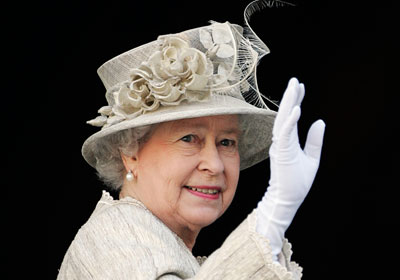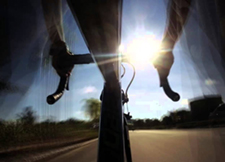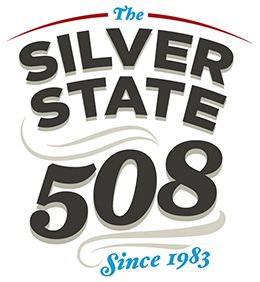Back in September 2007 I wrote an article called Running vs. Cycling: Calories Burned. This one article is by far my most successful in terms of daily hits from search engines. It gets hundreds of hits every single day, from Google and others. It is obviously sought after information by people looking to burn calories by exercising in order to lose weight.
My attention was drawn to the article yesterday when a friend emailed me that he burned 650 calories in one hour on his stationary bike and asked how many miles he had traveled. I’m not sure if he was “Yanking my Chain,” or “Pulling my Plonker,” as we Brits sometimes say, but I told him he had traveled Zero miles as it was a stationary bike.
Returning to the article, it states that running burns 110 calories per mile at any speed. The reason being it is distance covered, not time taken to complete the distance. One man runs a mile in 6 minutes and he burns 110 calories in 6 minutes. Another takes 12 minutes to run the same mile and burns 55 calories in the first 6 minutes and another 55 calories in the second 6 minutes. Both runners burn the same 110 calories for the same distance.
It was agreed upon in the discussion that followed the article that 110 calories burned was for someone around 150lbs. anyone heavier would burn more calories, someone lighter would burn less. I have seen this figure of 110 calories quoted in articles over and over again, and even seen it stated that walking burns the same 110 calories per mile.
At first glance this seems logical. You are hauling the same 150 lb. body over the same mile, it just takes longer. Twenty minutes walking, burning 5.5 calories per minute, equals the same 110 calories for the mile. Or does it?
I recently read this article in Runners World, and I feel it contains information that is far more reliable. The article explains that any exercise burns 5 calories per Liter of Oxygen consumed. Obviously a person consumes far more oxygen when running than walking.
The reason being, with each stride, the runner actually jumps into the air, overcoming gravity as well as driving himself forward. Then there is the impact of hitting the ground again with each stride, using energy to absorb the shock.
The average calorie burn (Per mile.) given in this article is 124 for a man running, and 88 calories walking. For a woman, because of the lighter weight, the average is 105 calories burned running, 74 walking.
However, the article makes a very important point when it states that when looking at exercise as a means to lose weight, one must take into account the Net Calories Burned (NCB) and not the above figures which are Total Calories Burned (TCB)
It is a little like a person saying he makes $50.000 or $100,000 per year as an income. This is his Total Income, his Net Income after taxes is less.
The “Tax” when it comes to burning calories, is a little thing called Resting Metabolic Rate. (RMR) This is the calories burned every single day if you do absolutely nothing, even if you lay in bed or sit on the sofa.
Some people talk of Basil Metabolic Rate, (BMR) which is a more accurate reading. Both are calculated, and RMR is close enough for most people. Here is a calculator.
Let’s say a person has a RMR of 1,500 calories. That means this person burns 1,500 calories every day doing absolutely nothing. Divide this by 24 hours. 1,500 divide by 24 equals 62.5 calories burned per hour. So if this same person walks 3 miles in one hour he burns 88 x 3 = 264 TCB. However, he must deduct the 62.5 calories he would have burned if he had stayed home and watched TV. His NCB is now 201.5.
Another man could run 6 miles in one hour and burn 124 x 6 = 774 TCB. Take away 62.5 for a total of 681.5 NCB. The runner has covered twice the distance and burned well over three times the calories in the same hour, over the man who walked. The more intense the exercise the more calories burned for the same amount of time.
 This same principal applies to cycling, and explains why some cyclists who ride a lot of miles still carry extra weight.
This same principal applies to cycling, and explains why some cyclists who ride a lot of miles still carry extra weight.
Cycling does have an added bonus, in that the faster you ride the more calories you burn, because wind resistance comes into play.
The chart that was in my original article is as good as anything if come across since. (See above left)
Let’s say our same subject with the 1,500 RMR, rides his bike 100 miles at a leisurely 10mph. He burns 26 calories a mile for a TCB of 2,600. Minus 625 calories he would have burned if he had stayed home for the 10 hours. (62.5 x 10.) His NCB is 1,975.
Now let’s say the same man rides 60miles at 20mph, an intense 3 hour ride. His TCB is 2,280 (60m. x 38 calories per mile.) Minus 3hr. x 62.5 calories, for a NCB of 2,092.5. So the intense 60 mile ride burned more calories than the leisurely century.
As you search the Internet you will find calorie charts and metabolic calculators that vary immensely. However, used as comparison tools they will serve to determine which form of exercise will work best to lose weight. It is quite simple really, shorter, intense workouts and eat less.

To Share click "Share Article" below
 Wed, December 2, 2015
Wed, December 2, 2015  A wave of the hand has to be one of the most simple and yet basic of human gestures.
A wave of the hand has to be one of the most simple and yet basic of human gestures. Dave Moulton | Comments Off |
Dave Moulton | Comments Off | 























Passion
Cycling is a passion, or rather, it can become one. Many people ride a bike, not all of them can be described as passionate about it. Passion is one of those words that is not easy to explain, one has to experience passion to know what it truly is.
Cycling becomes a passion when someone rides a bike for no other reason than to experience the joy of riding a bike. If you have a passion for something in life, you are truly living. Without passion, a person is simply existing.
People who say, “Cyclists should not be on the road because it is dangerous,” just don’t get it. It is like telling a surfer it is dangerous to go into the ocean because of shark attacks, the surfer who is passionate about surfing is not going to stop.
It is not that cyclists and surfers are crazy, foolhardy, with little regard for their life. In fact, the opposite is true. If one has a passion for life, the last thing that person wants is to end it. On the other hand, if one cannot engage in their passion, they are no longer living anyway. Life becomes a pointless existence.
Passion can include anger, especially if someone suggests I should not pursue my passion, which happens to be riding my bike on the road. It is a road bike after all, and just as a surfer must surf in the ocean, a road bike must be ridden on the road.
Some will say, “You have a local bike path, why don’t you ride there?” Yes I am fortunate to have a paved Walk and Bike Trail just two miles from my home. It is 7 miles long, so 14 miles out and home. But after riding it several times during the week, the monotony has got me itching to get out on the open road, and actually go somewhere.
On weekends I pick quiet country roads to ride where there is very little motorized traffic, and actually I prefer to deal with a few cars and trucks over the dog walkers and runners on the shared path.
Of course, they have a right to be there too, so I am not complaining. Some of them may be are following their own passion.